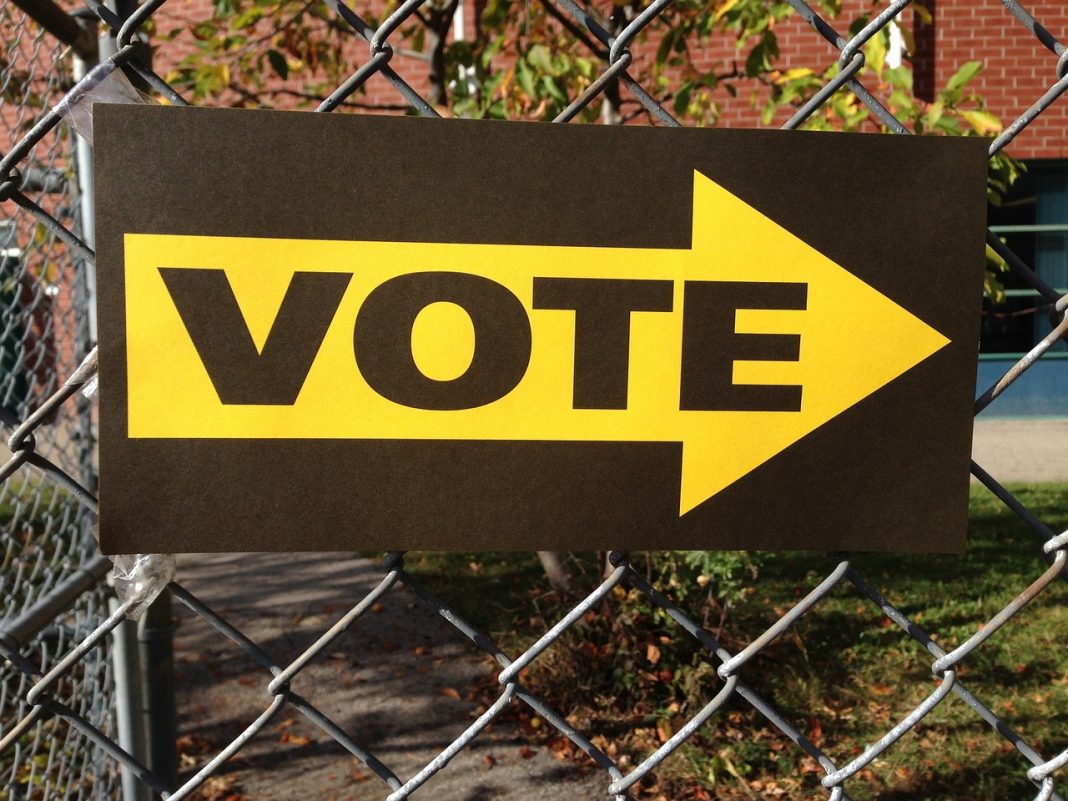|
Getting your Trinity Audio player ready...
|
Polls Show Narrow Leads for Trump in Battleground States: Has Harris Lost Her Momentum?
Edited by: TJVNews.com
As the 2024 presidential election draws closer, polling data from various states is becoming a focal point in assessing the political landscape. While most national polls still show Vice President Kamala Harris leading in many of the critical swing states that will determine the election, two Southern state pollsters are offering a different narrative—one where former President Donald Trump is gaining a decisive edge, according to a report on Tuesday in The New York Post. Polling by InsiderAdvantage and Trafalgar across seven battleground states paints a picture of a tight race that could swing in Trump’s favor, suggesting that Harris’s early momentum may be waning.
According to polling conducted by Matt Towery of Georgia-based InsiderAdvantage and Robert Cahaly of Trafalgar, Trump is now ahead in several pivotal states, including Arizona, Nevada, and North Carolina. These three states, alongside Georgia, Pennsylvania, Wisconsin, and Michigan, are considered essential in the battle for the 270 electoral votes needed to win the presidency. Towery’s data even indicates that Trump is trailing Harris by only 0.4% in Georgia, a state that went blue in 2020 but remains deeply contested.
Towery and Cahaly have built reputations as two of the more accurate pollsters in recent election cycles, particularly in 2016 and 2020, where their models succeeded in identifying key Trump voters who may have been missed by other polling firms, as was reported by The Post. Their success is often attributed to unique polling methodologies that account for “hidden” or reluctant Trump voters, a factor they believe could be critical in the 2024 race.
While these polls suggest Trump is ahead in several swing states, it’s important to note that his leads are narrow and fall within the margin of error. The Post report said that this means that while Trump is currently projected to win up to 296 electoral votes, these states are still very much in play, and Harris could easily close the gap in the final weeks of the campaign. With the leads ranging from 0.4% in Georgia to low single digits in other states, the results on Election Day could still go either way.
Despite the close margins, the data highlights one key point: the momentum Harris initially had following the Democratic National Convention has seemingly stalled. Early enthusiasm from Democratic voters appears to have slowed, and the surge seen when Harris replaced President Biden as the party’s nominee has now evened out with Republican enthusiasm.
Towery pointed to Harris’s waning momentum as a significant factor in the tightening of the polls. “The momentum that we were seeing after the Democratic National Convention has sort of come to an end,” he stated. Indicated in The Post report said that in the weeks following Harris’s nomination, Democratic enthusiasm surged as voters rallied behind the historic choice of the first woman of color to lead a major party ticket. However, this novelty may have worn off, and the energy that initially gave Harris a boost has diminished, leading to what Towery describes as “close to parity” between Democratic and Republican enthusiasm.
Towery’s analysis suggests that while Harris’s candidacy initially generated excitement, the passage of time, along with the challenges of a tough campaign, may have tempered Democratic enthusiasm, The Post report suggested. Combined with the reactivation of Trump’s loyal voter base, this has created a more evenly matched contest as the race heads toward its final stretch.
With the election now looking like a “turnout election,” both parties are focusing heavily on mobilizing their voters to the polls. The report in The Post revealed that Towery emphasized that the upcoming presidential debate will be pivotal in determining the trajectory of the race. He referred to it as a “make or break” moment that could solidify Trump’s current advantage or reignite Harris’s momentum.
Debates have often played a critical role in shaping election narratives, and both candidates will be under pressure to perform well. Trump, who has built his campaign on a familiar platform of populism and economic nationalism, will look to energize his base and sway undecided voters in the swing states. On the other hand, Harris will need to reconnect with Democratic voters and convince those in the middle that she is the candidate best suited to lead the country forward.
Towery believes that Trump has a unique opportunity to use the debate as a major turning point in his campaign. As per The Post report, Towery sees similarities between the upcoming debate and the Carter-Reagan debate in 1980, where Reagan’s calm and composed performance helped him secure a decisive win over the incumbent, Jimmy Carter. Towery suggests that if Trump can present a “realistic” and more measured version of himself, he could sway undecided voters and cement his position as the frontrunner.
“This could become a real turning point like the Carter-Reagan debate that basically sealed the deal in 1980,” Towery predicted, according to The Post report. Trump, who is known for his larger-than-life persona and combative style, will need to strike a balance between his strong populist rhetoric and a level of restraint that appeals to a broader swath of voters. If successful, the debate could mirror the impact of Reagan’s performance, where he was able to connect with both conservatives and moderate voters, leading to a landslide victory.
For Vice President Kamala Harris, the stakes are equally high, but according to Cahaly, she faces a more difficult path. The report in The Post said that Cahaly has argued that Harris is in a “no-win situation,” with the most to lose during the debate. If she performs well, it may only sustain her current position, but a misstep could give Trump the momentum he needs to swing undecided voters and close the gap in key battleground states.
Cahaly noted that Harris’s reluctance to engage in interviews and her somewhat limited visibility in the media have made her more vulnerable. “Her disinterest in interviews has left the media feeling ignored and angry,” he observed, as noted in The Post report. Harris’s approach has created a perception that she is avoiding scrutiny, which may make it harder for her to win over undecided voters during the debate. The pressure on Harris will be to deliver a flawless performance that can energize her base while also appealing to moderate voters who may still be on the fence.
At the same time, Cahaly sees “conservative Democrats” as a potential swing group that Trump may be able to win over. He argues that more conservative or moderate Democrats are more likely to cross over to Trump’s side than Republicans are to support Harris. This presents a significant challenge for Harris, who will need to walk a fine line between rallying progressive Democrats and retaining support from more centrist voters.
While Trump is well-positioned in the polls, Cahaly warns that the former president’s unpredictable nature presents a significant risk during the debate. Known for his unfiltered remarks and off-the-cuff style, Trump may say something that “overshadows” the rest of the event, as was observed in The Post report. A single misstep or inflammatory comment could derail his lead and shift the narrative in Harris’s favor.
Trump’s history of dominating debate stages with his brash style has energized his base, but it has also alienated moderate voters in past elections. In 2020, for example, Trump’s overly aggressive performance in the first debate against Joe Biden was widely criticized and may have hurt his standing with undecided voters. Cahaly cautioned that Trump needs to be careful not to repeat those mistakes, as the stakes are higher now with the race neck and neck in several swing states.
If Trump can avoid making headlines for the wrong reasons and present a more composed version of himself, the debate could reinforce his narrow leads in battleground states like Arizona, Nevada, and North Carolina. However, any major gaffe could undermine the momentum he has built in recent weeks.
Despite the positive polling for Trump, Cahaly offers a word of caution: the race is far from over. The Post reported that he acknowledges the formidable strength of what he calls the “Democratic machine,” which has historically been effective at mobilizing voters in key states. Cahaly suggests that this machine could shave “a point or two” off Trump’s lead, making the current polling numbers less reliable as an indicator of the final outcome.
In previous elections, the Democratic Party has demonstrated a robust get-out-the-vote effort, particularly in states like Pennsylvania, Michigan, and Wisconsin—critical swing states where every vote counts. The impact of this organizational strength could close the gap between Trump and Harris, especially if Harris can rally her base in the final weeks leading up to Election Day.
Furthermore, Cahaly points out that early voting and absentee ballots, which traditionally favor Democrats, could further erode Trump’s slim margins. Also indicated in The Post report was that a narrow lead in September may not necessarily translate to a victory in November, especially with the potential for late momentum shifts or unforeseen events.
In the end, the debate could very well decide the outcome of the 2024 election. With polls showing tight races in battleground states and the “Democratic machine” poised to close the gap, both candidates must approach this debate as a make-or-break moment. The nation will be watching closely, and the political landscape could shift dramatically depending on what unfolds on stage.





